The Ethereum Foundation is running a Data Challenge for EIP4844! If you'd like access to the data used in this analysis send an email to ethpandaops(at)ethereum.org
More info: https://esp.ethereum.foundation/data-challenge-4844
Introduction
Dencun has finally shipped to mainnet! This post will give some initial insights on how the fork event unfolded, and how it's performing.
This analysis will cover roughly ~1d before the Dencun fork and ~1d after the fork.
Parameters
- Network: Ethereum Mainnet
- Fork: Dencun
- Load: Free range, all organic blob and transaction load 🍃
Data sources
Data was collected from 2 different sets of nodes. Each analysis section will note which data source used.
Xatu
Data was collected with the use of our distributed monitoring tool called Xatu. Xatu has a low resource use component called a Sentry that can collect data from the consensus client event stream and forward it to the Xatu server for collection.
We hosted 45 such sentries across 6 locations in the world, including: Santa Clara, San Francisco, Amsterdam, Helsinki, Bengaluru and Sydney. The consensus client side consisted of 9x each production ready consensus layer client.
Data from Xatu is available for research purposes. Send an email to ethpandaops(at)ethereum.org if you'd like access!
Self-Hosted NUCs
We run a large part of our mainnet stack in house on NUCs, this is akin to hardware that most solo stakers possess. This however should be taken with a grain of salt as the resource might vary depending on quite a lot of smaller factors. NUCs run from Europe and the 🦅USA🦅.
Analysis
Resource Usage
Data Source: Self-Hosted NUCs
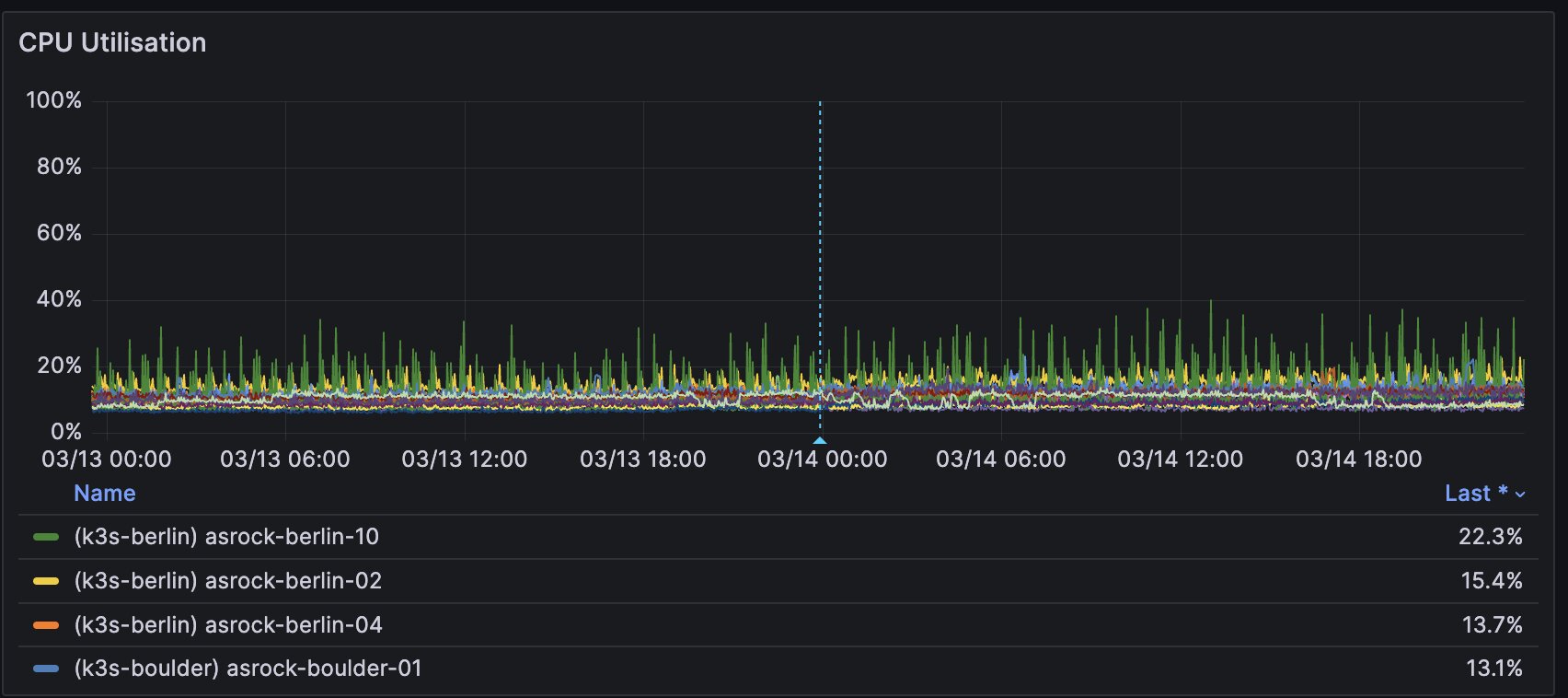
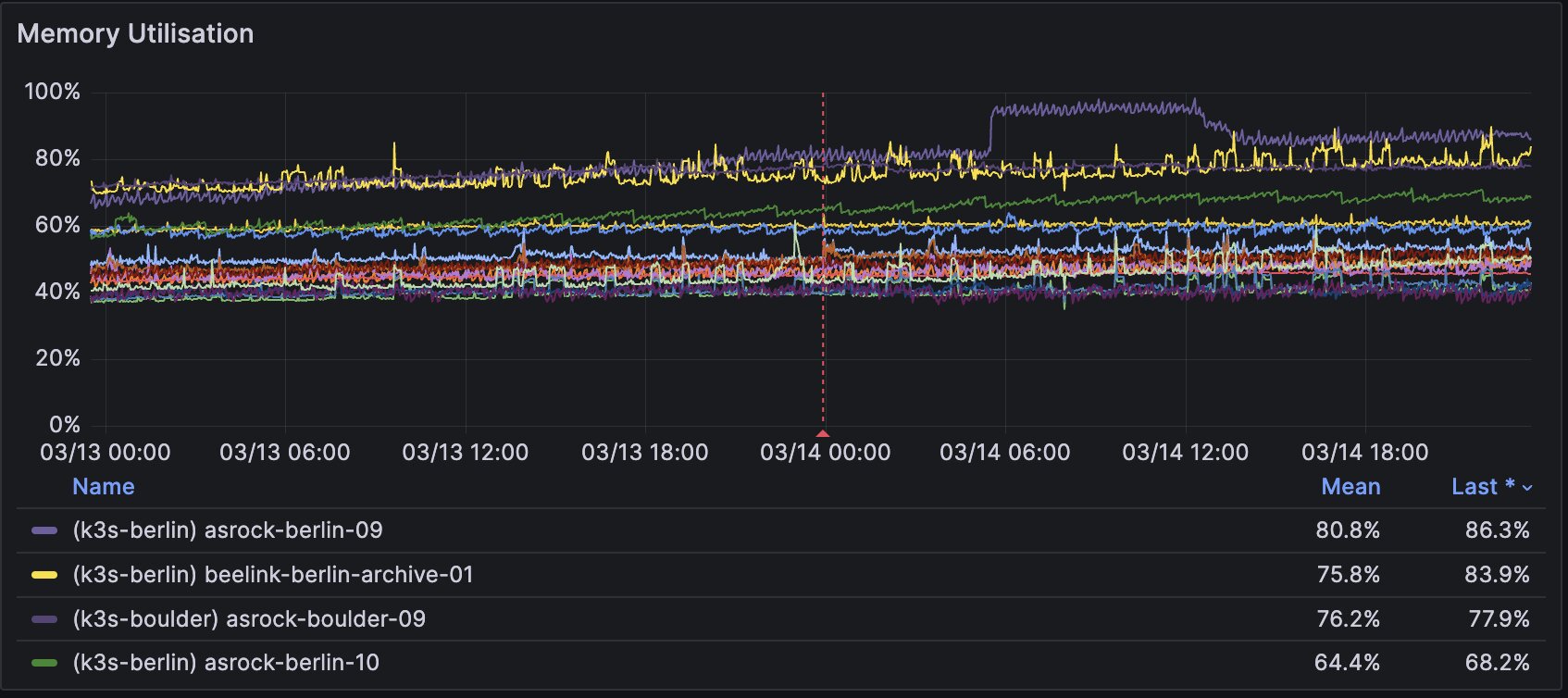
CPU and RAM usage seems mostly unchanged across the clients over. This is likely due to the blob load being quite small throughout this period and the extensive optimisations made by the client teams 🔥
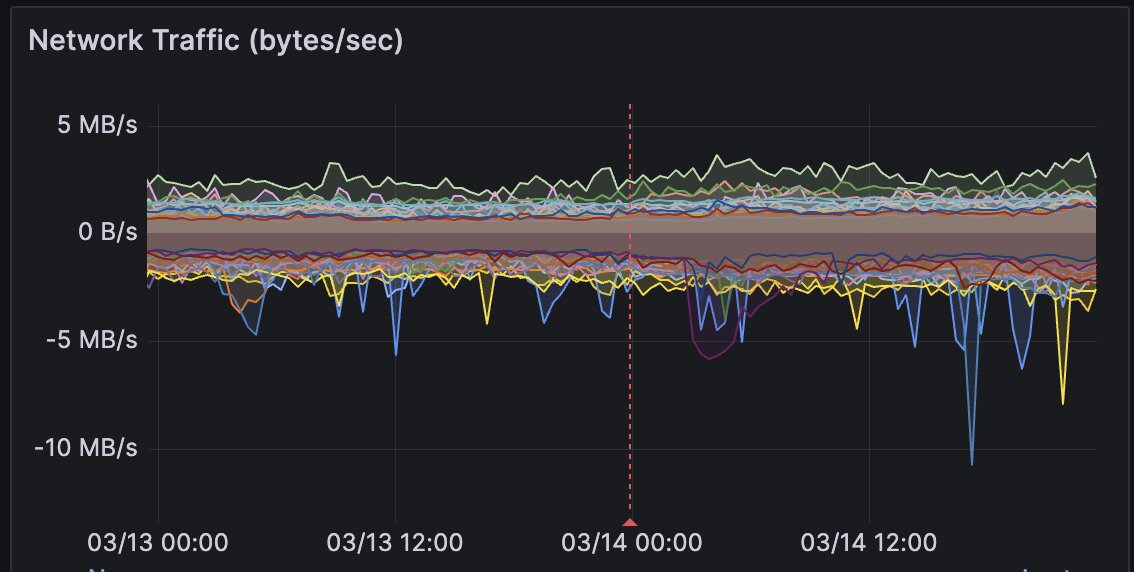
Network usage is also largely unchanged for these nodes, but will likely slightly increase as blob usage increases.
Beacon Chain
Data Source: Self-Hosted NUCs + Xatu
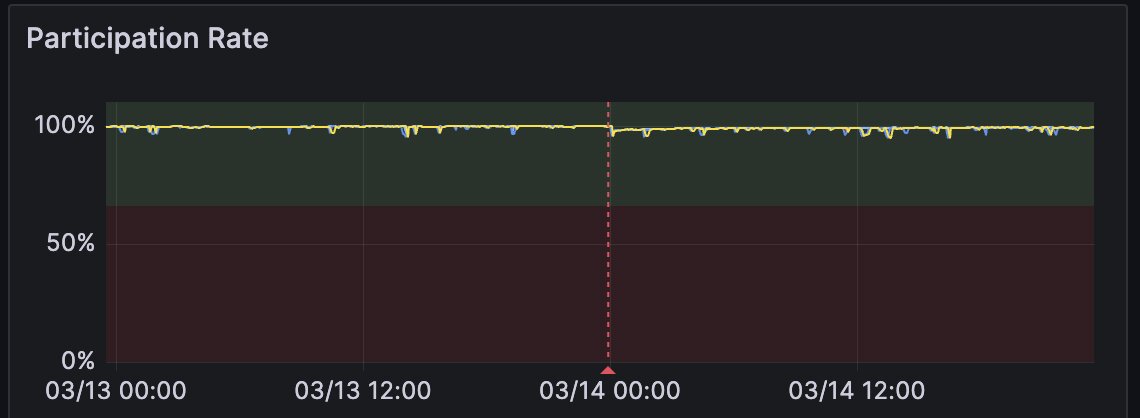
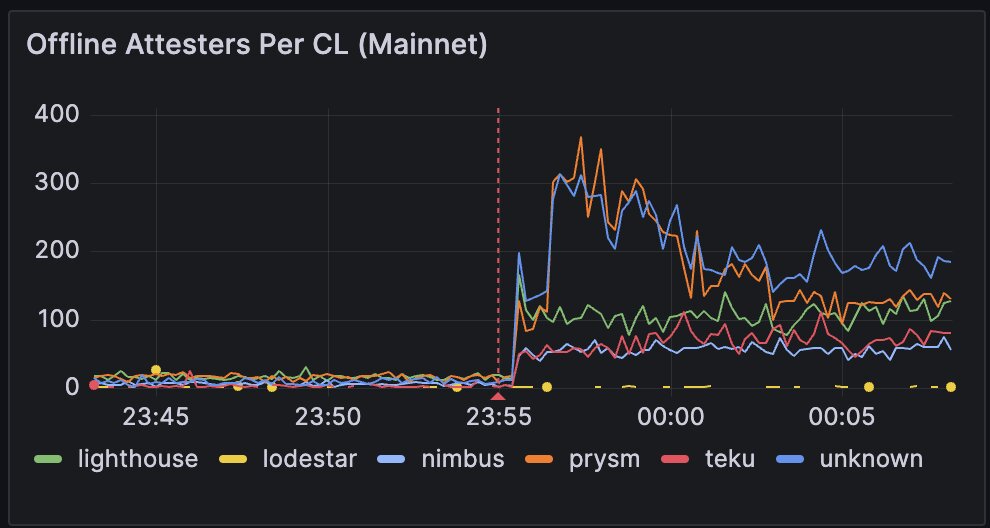
We see a 5% drop in participation immediately after the fork. Using a combination of Blockprint and co-relating it with Xatu sentry data we are able to determine that there was an even spread of offline attesters across consensus layer clients. This indicates that there was no specific issue with a cleint but instead a general "forgot to update" situation.
In terms of network health the drop reduced participation but quickly picked up and we are currently seeing similar levels as pre-fork.
Blobs
Data Source: Xatu


Based on the blob metrics per block, we mostly see 0 blob blocks being built. This is likely due to most L2s not having their governance proposals to start using blobs. We can expect the blob usage to increase as more L2s start posting blobs.
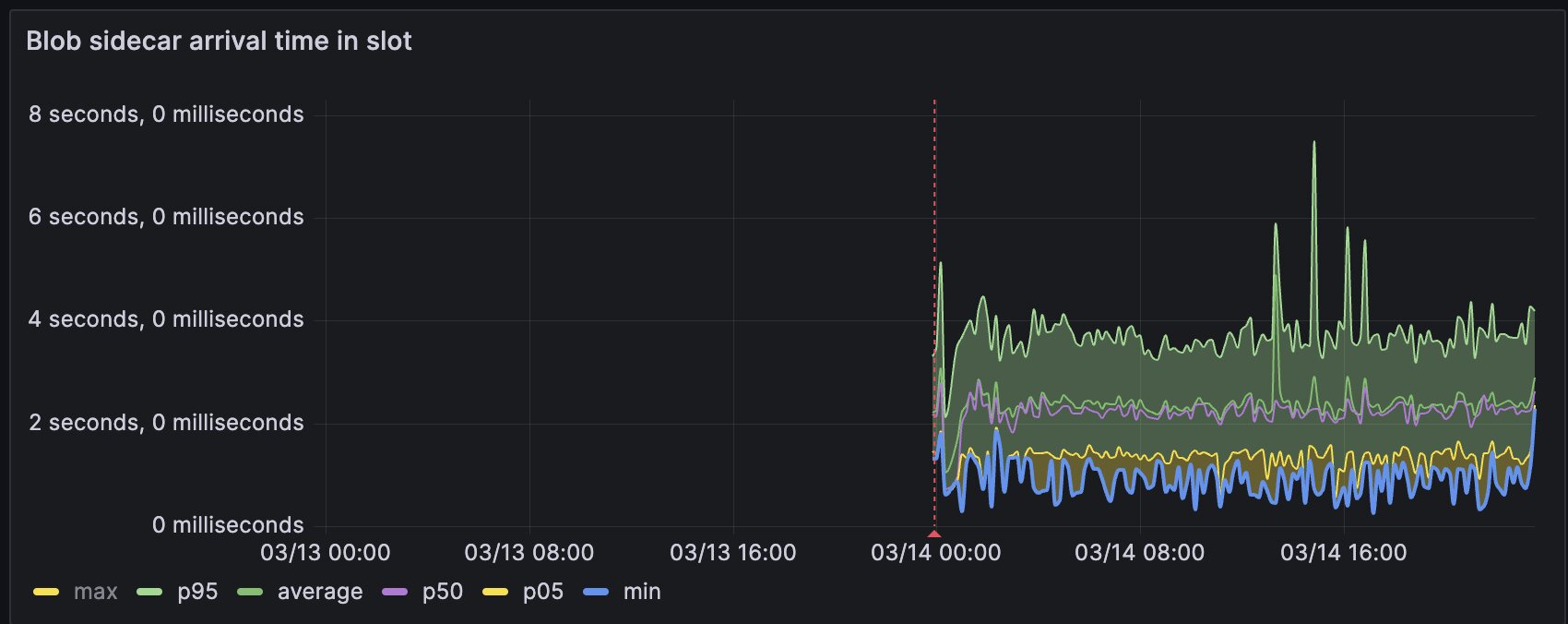
The small number of blobs on the network lead to them being on average propagated across all the sentries in < 2.5s, with the p95 case being ~4s. This is close to the attestation boundary, one should probably keep a close eye on this information.
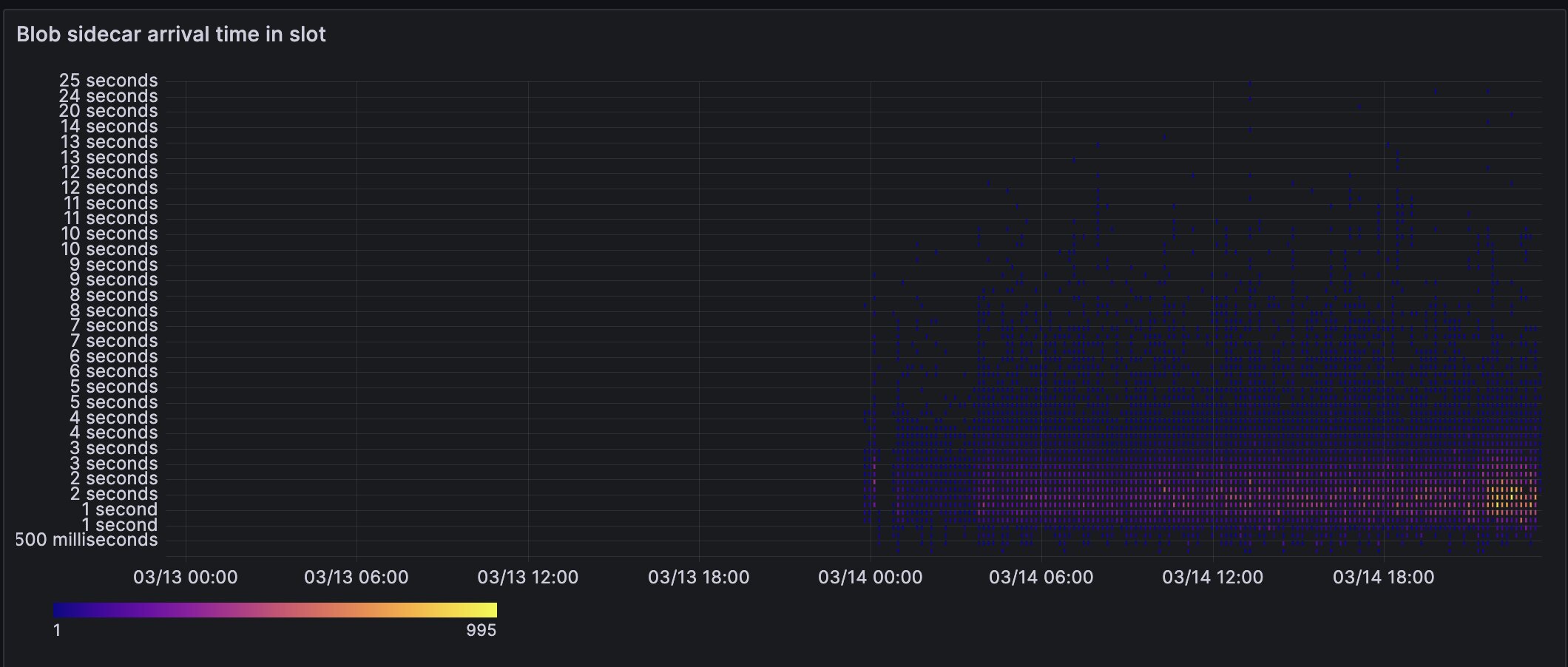
The blob heatmap mirrors the above point as well. Once there is more regular blob usage, we should be able to narrow down latency impacts on proposals.
Both the above graphs indicate that we might need to narrow down if there is a certain region with far worse latency (like Australia).
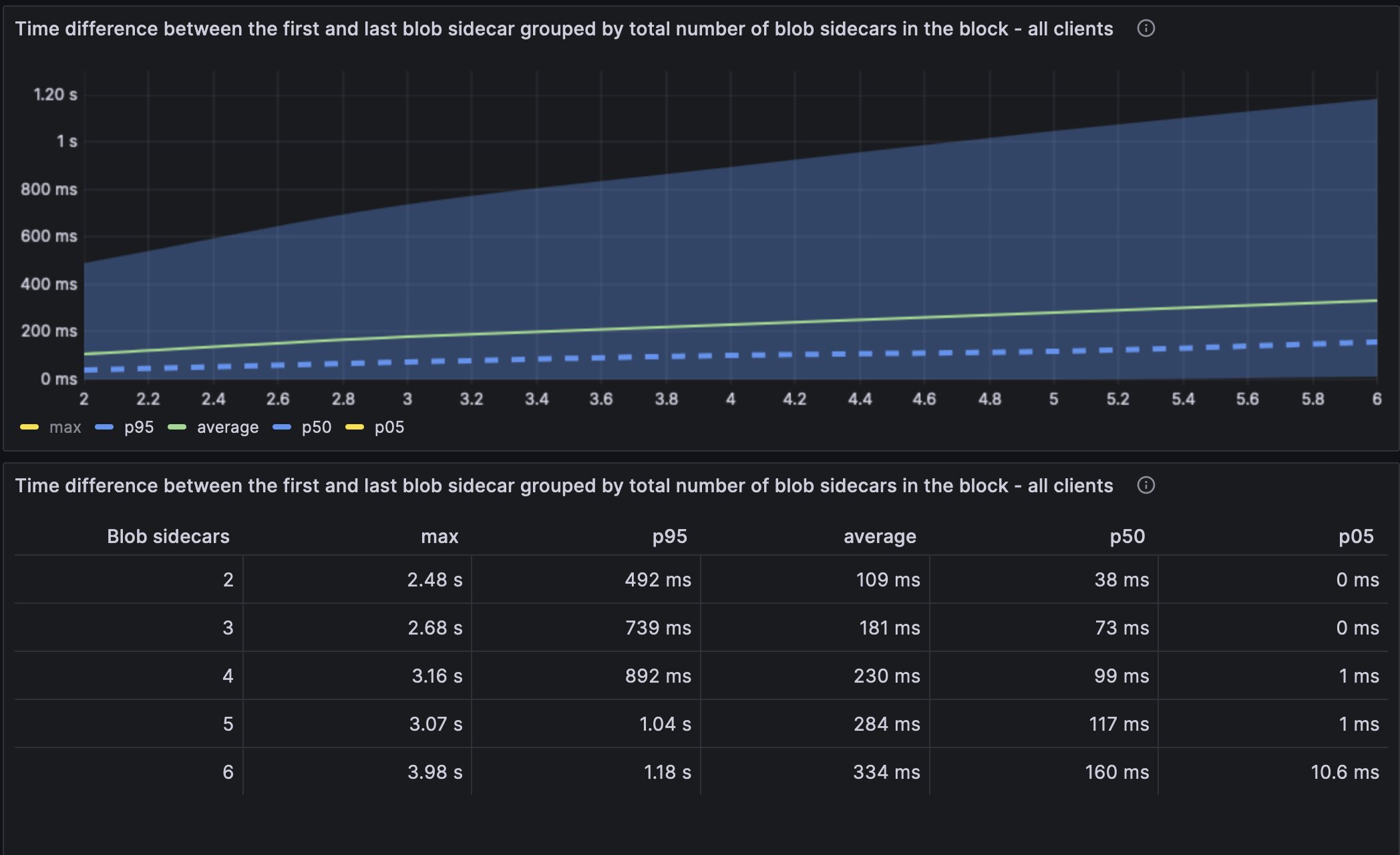
The time difference from the first blob seen to the last blob seen in a slot is quite narrow. This is good news as a higher latency would indicate some routing issues on the p2p layer.
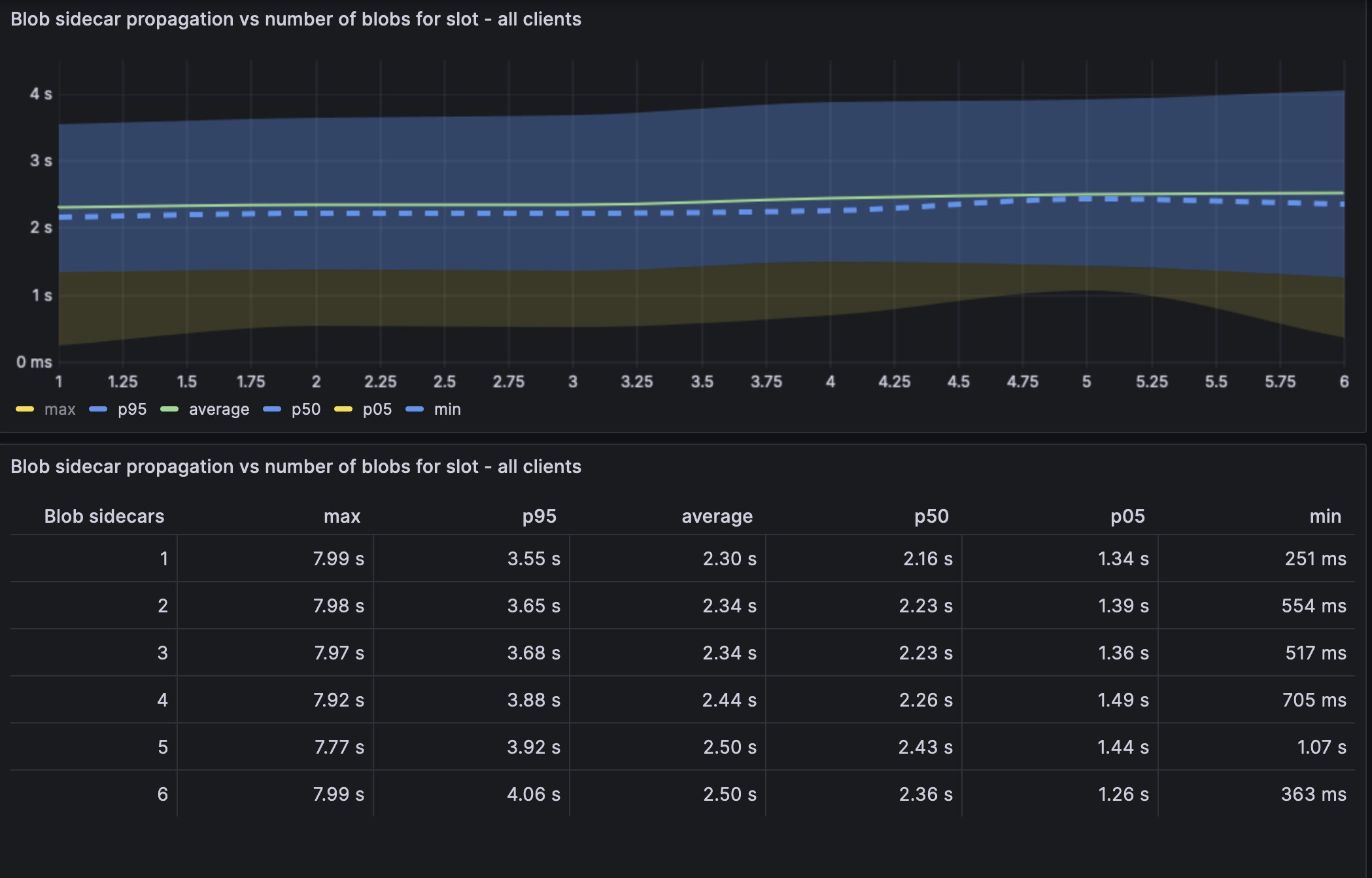
The numbers indicate at this load level that slots including 6 blobs or 1 blob doesn't have any noticeable impact on the average arrival time.

Majority of blobs contain little or no empty space.
Blob impact on Blocks
Data Source: Xatu
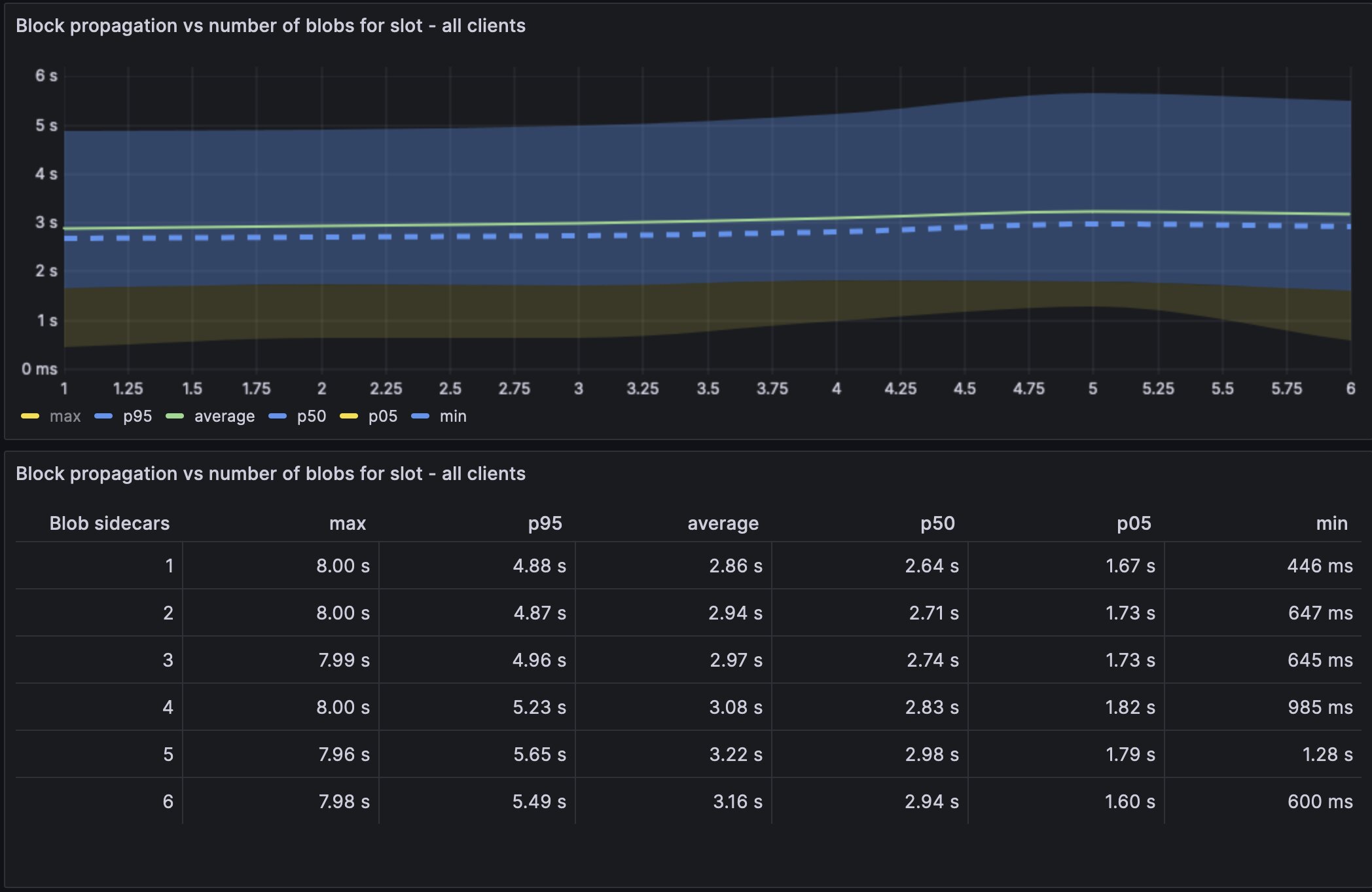
Block arrival time seems to be is ~10% worse when a slot has 6 blobs compared to 1 blob. This is still well under the 4s mark, but we are clearly getting closer to the attestation deadline and more analysis might be needed.
Attestations
Data Source: Xatu
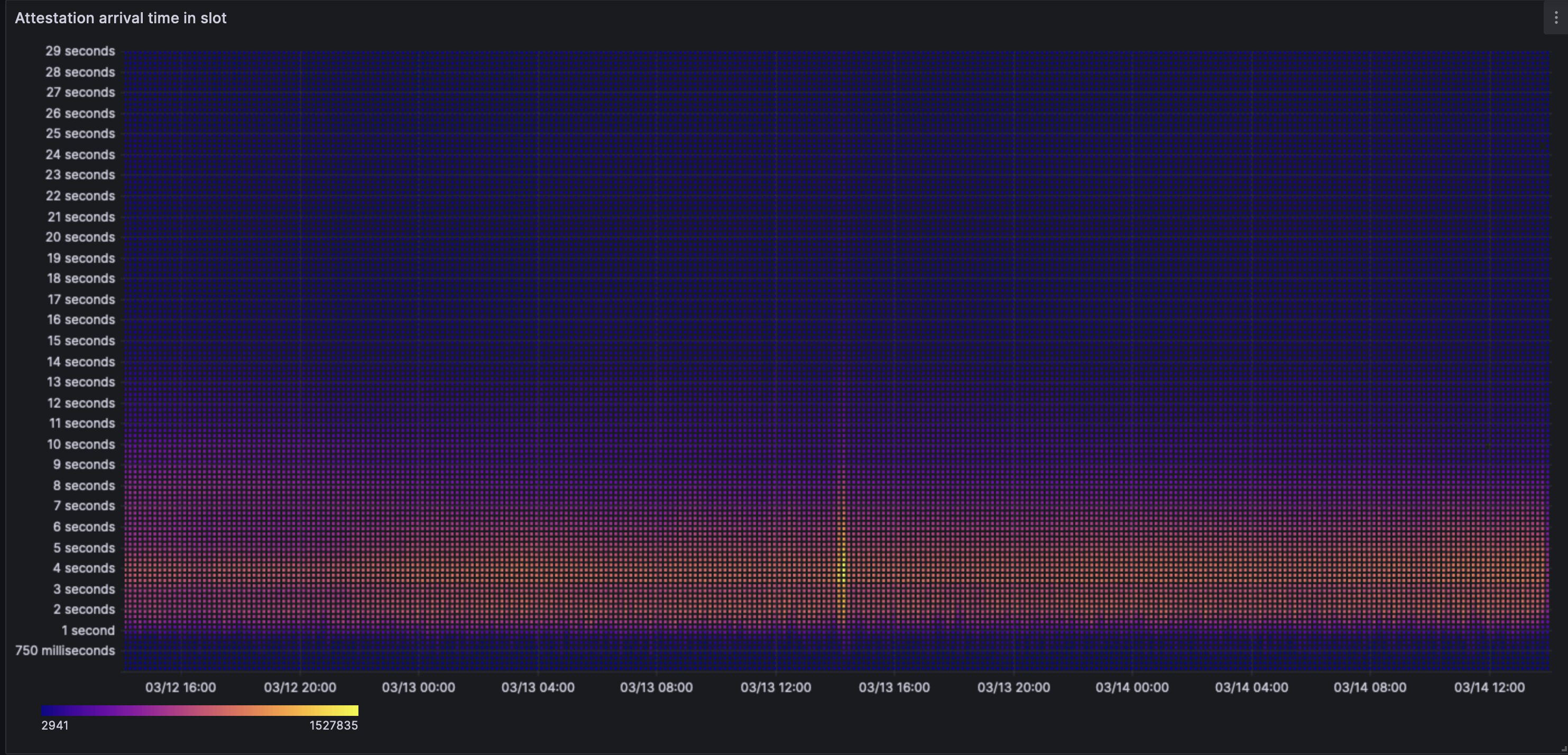
The attestation heatmap seems largely unchanged before and after the fork. Note the bright spot can be ignored - this is just a quirk of the data pipeline tool which ingested some duplicates through that period.
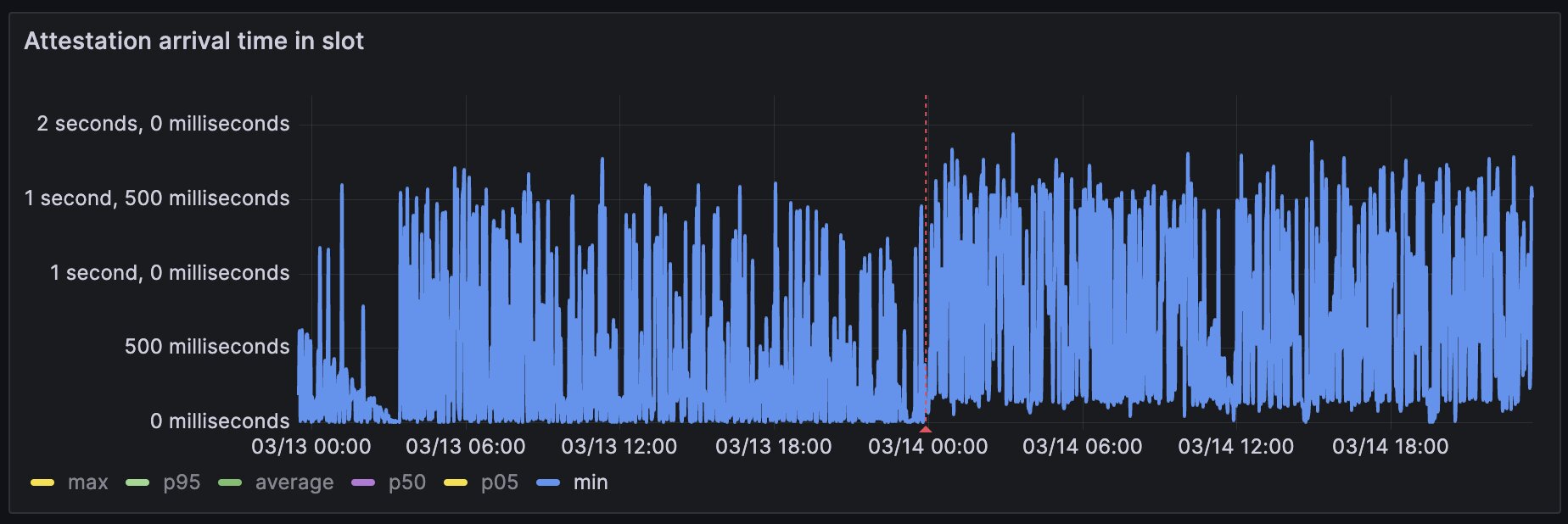
There is an increase in the floor of min arrival time as attesters wait for any blobs referenced in the block to arrive before creating their attestation.

The 50th percentile of attestation arrivals remains the same as before the fork.
Blocks
Data Source: Xatu

There is no major change in block arrival times after the fork. This isn't particularly surprising since the blob parameters are fairly conservative, but the indirect effects of more bandwidth usage were a concern. This may indicate that we can safely bump the target blob count in a future fork, but will need further analysis over a larger time period.
Conclusion
Uneventful forks are the best - a huge shoutout to all involved. This result comes off the back of 2+ years of R&D, and paints an extremely bright outlook for the Ethereum community.
Things we expected:
- ✅ Blobs arrive within an acceptable time
- ✅ Slight delay in attestation arrivals due to the addition of blobs
- ✅ No massively noticable increase in block arrival times
Some questions will be answered as Dencun matures over time:
- ❓ Is there a higher reorg rate from the increased bandwidth
- ❓ Is there an impact to attestation effectiveness
- ❓ Does it impact geographically distributed validators more
- ❓ Can we safely bump the blob parameters
Wen Pectra?



